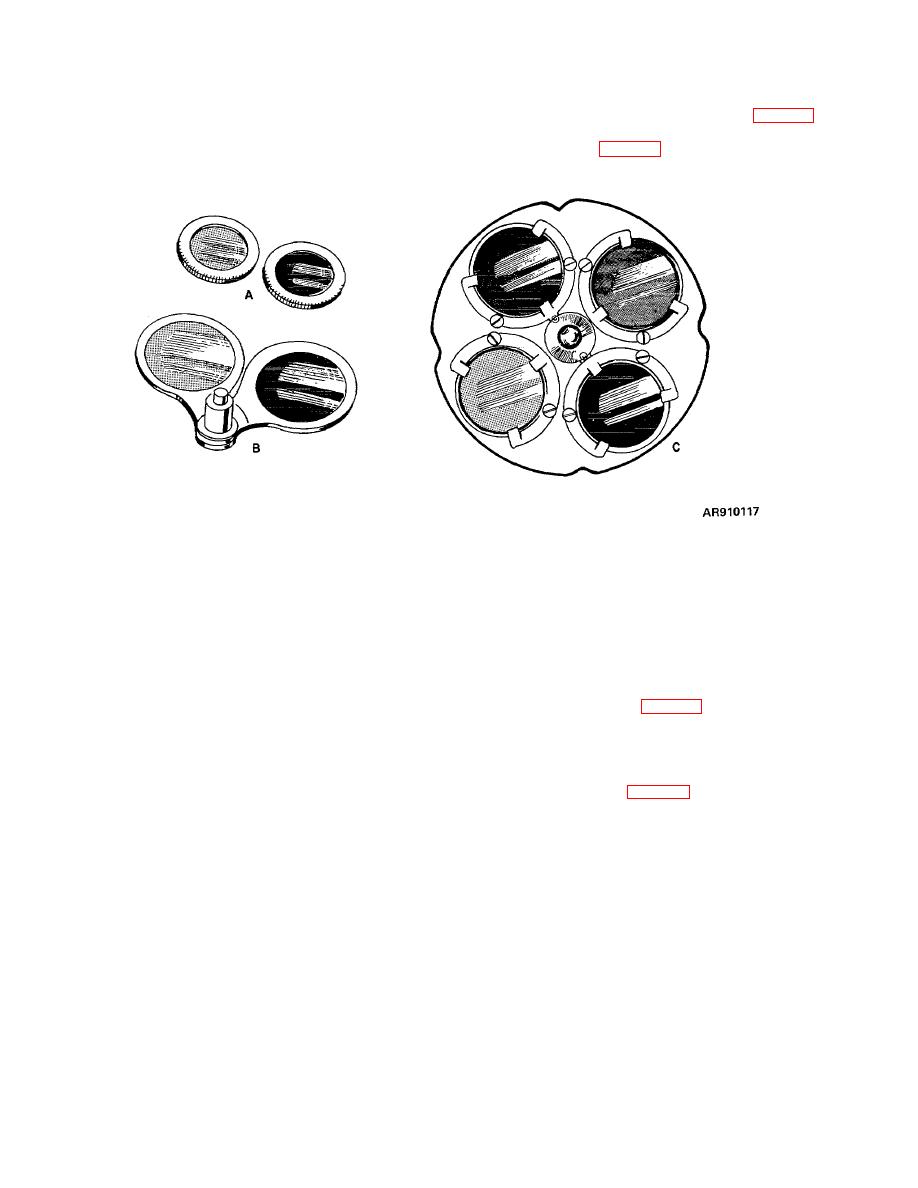 |
|||
|
|
|||
|
|
|||
| ||||||||||
|
|
 TM 9-258
intensities. They are provided as separate elements
4-11. Filters.
which may be attached and detached (A, fig 4-27) or are
a. General. Filters or ray filters are colored glass
mounted so they may be placed in or out of position as
disks with plane parallel surfaces. They are placed in the
desired (B and C, fig 4-27).
path of light through the optical system of a fire-control
instrument
to
reduce
glare
and
light
Figure 4-27. Types of filter mountings.
b. Colored Filters. Filters of various colors are
c. Polarizing filters.
(1) Polarizing filters do not change the color of
used to improve visibility under different atmospheric and
objects but merely decrease light intensity and are used
light conditions. Among the colors of filters used are:
to eliminate glare. When mounted in pairs, they can be
smoke, yellow, amber, blue, red and greenish-yellow.
used to provide continuous control of light intensity.
(1) The smoke (neutral) filter reduces the
(2) Light polarizing substances can be
intensity of light and is effective when observing against
considered as being made up of very minute parallel
or in close vicinity of sun or a searchlight; usually it is too
bars or grain (A and C, fig 4-28). Light vibrates in waves
dark for other purposes.
with the crests of the waves in all directions. A polarizing
(2) The yellow and amber are used to protect
substance, placed in the path of the light, permits waves
the eyes from the reflection of sunlight on water and
vibrating parallel to the direction of the grain to pass
other general conditions of glare.
through; waves vibrating at right angles to the bars or
(3) The amber and red filters are usually
grain are stopped (B, fig 4-28). By eliminating a portion
employed under various conditions of fog and ground
of the light, the intensity of the light is decreased. When
haze. Red filters are also used in observing tracer fire.
two polarizing substances are held with the grain of one
(4) The blue filter is helpful in detecting the
at right angles to that of the other, no light passes
outlines of camouflaged objects.
through. By shifting the substance to intermediate
(5) The greenish-yellow filter is intended to
angles, light at different degrees of intensity is permitted
serve the purpose of both smoke and amber.
to pass through.
4-29
|
|
Privacy Statement - Press Release - Copyright Information. - Contact Us |